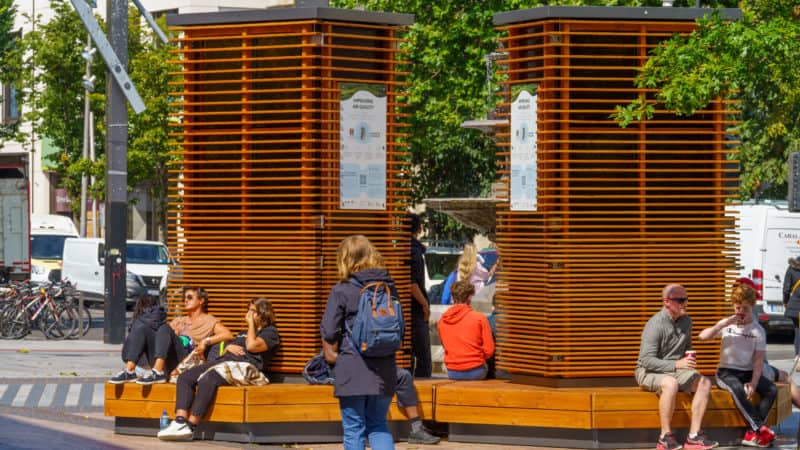More trees for the city?
Sure, but where?
Cities are the largest emitters of CO2. However, the high degree of soil sealing makes it almost impossible to place plant solutions that bind emissions in place. Cables, sewers and underground shafts leave no room for trees to grow roots. A sustainably healthy tree needs about as much space for its root system as its tree crown is large. In inner-city spaces, however, underground open spaces are as rare as a sub-£10 lunch in London.

Urban spaces have enormous surface potential for the fight against climate change.
If you unfold a city and its surfaces, the result is a huge area. The facades of the 11 high-rise buildings in Berlin alone correspond to an area of 150,000m². This is equivalent to 21 football fields of ecologically unused space. In addition, about 70% of Berlin’s total area is sealed and offers no root space for healthy trees. That is 620,000,000m² (86,000 football pitches). This area does not have to remain unused.
Mosses can actively combat climate change and mitigate its consequences.
Mosses bind CO2 and convert it into oxygen via photosynthesis. A moss mat (60 *80cm) processes one kilogram of CO2 per year. Mosses are amazingly resistant and even work at slightly sub-zero temperatures. In addition, mosses filter substances that are harmful to the climate, such as soot particles. The effect of soot on global warming is 1,800 times more intensive than that of CO2. This conversion to CO2 is referred to as CO2 equivalents (CO2e for short).

And that is why we are certain: moss must go into the city!
By 2030, we want to bring 100,000 square metres of active moss surface to cities in order to clean the air for 500 million people and reduce 100 million tonnes of CO emissions. In this way, we can slow down climate change and mitigate its consequences. So that the city will still be worth living in tomorrow and its air will remain clean and cool.
